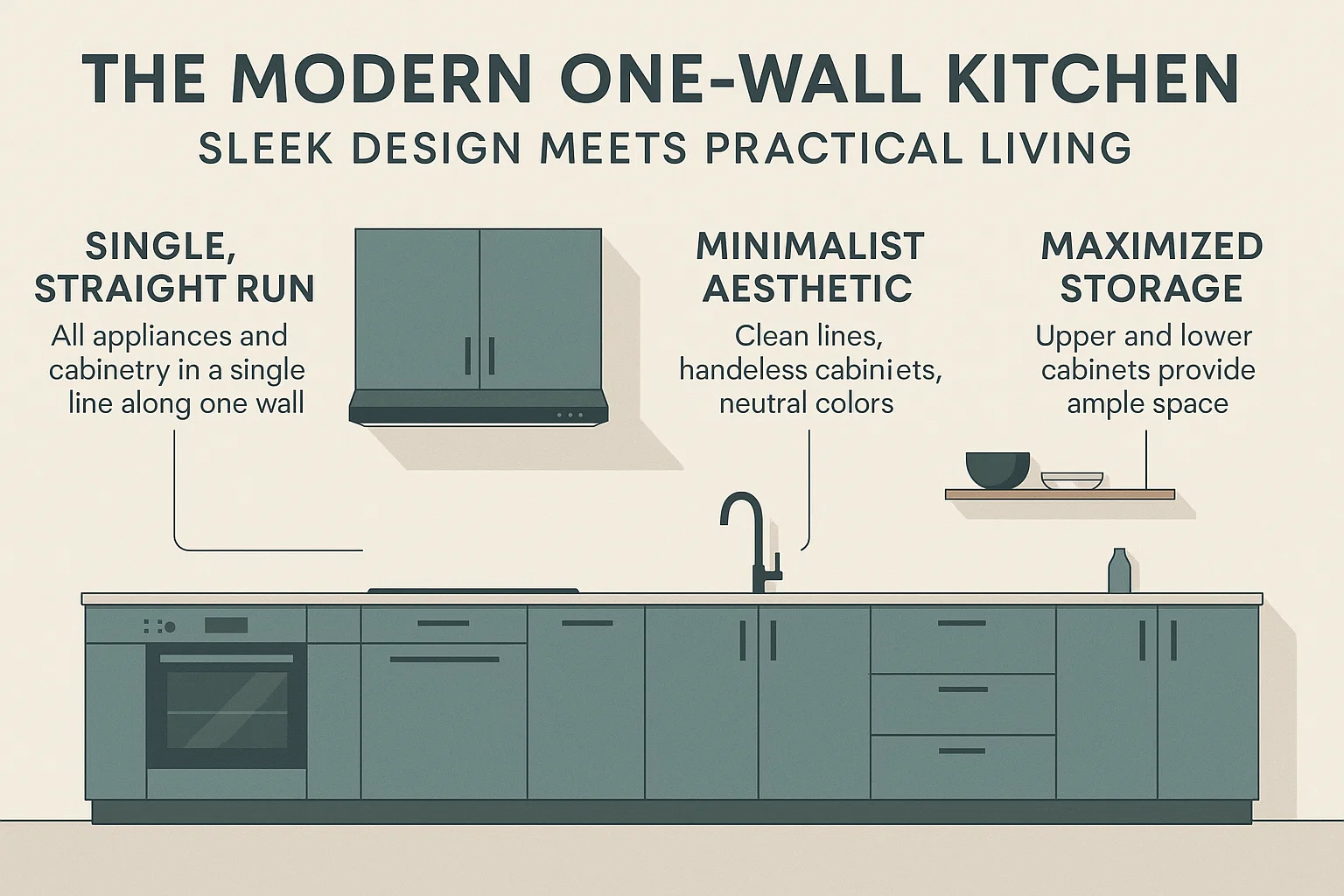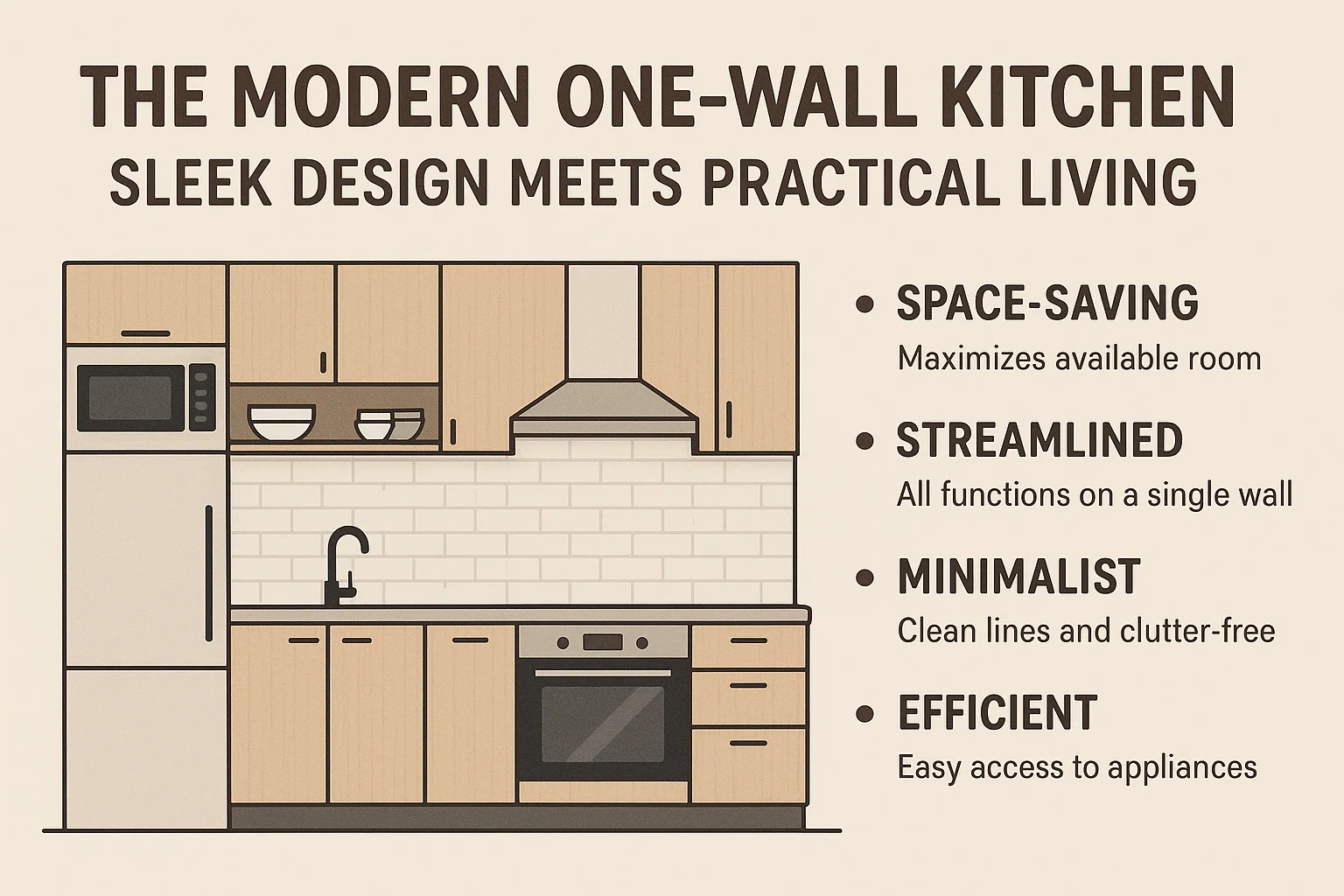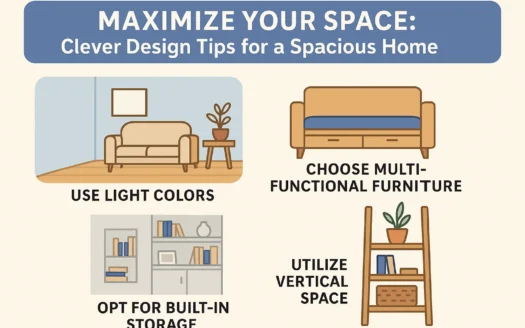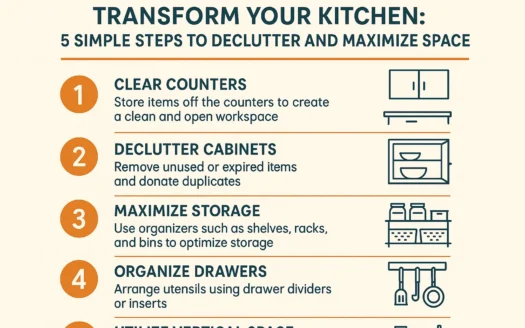The Modern One-Wall Kitchen: Sleek Design Meets Practical Living

The Modern One-Wall Kitchen: Sleek Design Meets Practical Living
A kitchen is often hailed as the heart of the home—a gathering spot for family and friends. Among evolving design trends, the one-wall kitchen has emerged as a favorite for its sleek, bold, and minimalist appeal. But what defines this style, and how does it differ from traditional layouts?
What is a One-Wall Kitchen?
Unlike traditional kitchens that follow the “work triangle” concept (with appliances spread across multiple walls), a one-wall kitchen consolidates all major elements—cabinets, sink, refrigerator, and range—into a single wall at least 8 feet wide. Inspired by commercial kitchen efficiency, this layout streamlines workflow from storage to prep to cooking. The remaining walls remain open, often blending seamlessly into adjacent living areas.
Key Features of a One-Wall Kitchen
- Modern Aesthetic: Clean lines and minimalistic design.
- Space Efficiency: Ideal for maximizing square footage in smaller homes or apartments.
- Functional Zones: Appliances and workspaces align linearly for efficient movement.
- Customizable Style: Bold cabinet finishes, sleek countertops, and integrated appliances cater to both dramatic and discreet tastes.
Pros of a One-Wall Kitchen
- Compact Design: Frees up space for dining or living areas, perfect for open floor plans.
- Efficient Workflow: Reduces time spent moving between tasks.
- Cost-Effective: Fewer cabinets and countertops lower material costs.
Cons to Consider
- Limited Prep Space: Appliances dominate wall space, but a mobile island can add flexibility.
- Storage Constraints: Built-in islands or creative shelving solutions may be needed.
- Resale Impact: Some buyers prefer larger kitchens for entertaining.
Is a One-Wall Kitchen Right for You?
Whether you’re a culinary enthusiast or prefer simplicity, the one-wall kitchen offers a functional, space-saving solution. Its adaptability allows for bold design statements or understated elegance, proving that less can indeed be more.




